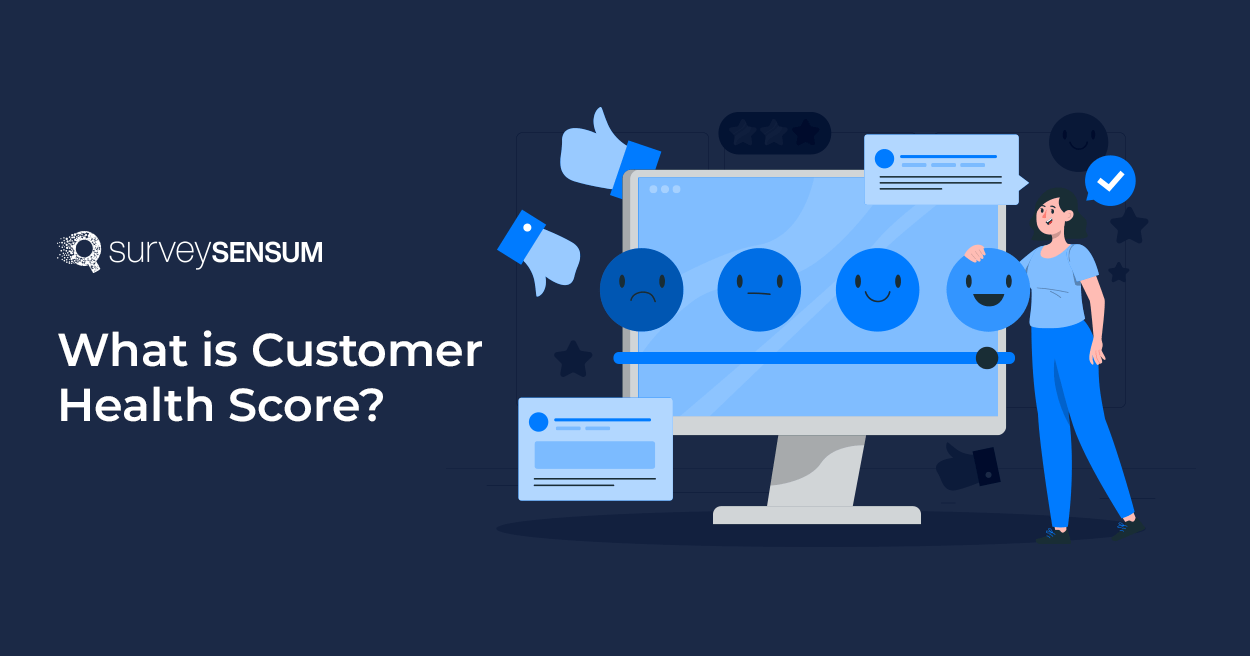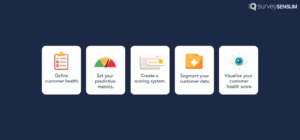9 Ways to Improve NPS Response Rates
Read More

Ever found yourself wondering why some businesses flourish while others struggle to keep up?
Imagine your business as a vibrant garden, with customers as the colorful blooms. But, here’s the thing – how do you ensure your garden is thriving?
— Enter the Customer Health Score – the secret sauce that successful businesses swear by.
It’s like a fitness tracker for your customer relationships, telling you when things are blooming or need a little extra care.
But hold on, do you know how to interpret these signals? With customer feedback!
It helps gauge your Customer Health Score, giving you insights into the heartbeat of your business relationships.
And that’s not all, a robust customer feedback tool can simplify this process, making it a breeze for you.
So, if you’re ready to dive deep into the realm of unlocking success through customer insights, this guide is tailor-made for you.
In this blog, we will discuss how this metric can help your business, how to calculate customer health score, and why it is important, along with some examples.
But let’s first understand what is a customer health score.
What is a Customer Health Score?
How to Calculate Customer Health Score?
Customer Health Score Examples
Customer Health Score is a CX metric that businesses use to assess the overall well-being of their customer relationships. It quantitatively measures customer satisfaction and engagement based on various factors and KPIs.
The goal is to gauge how satisfied and loyal customers are and to identify any potential issues that may affect the long-term health of the customer relationship. It considers various factors, including product usage, customer feedback, and engagement.
With the customer health score you can,
1. Identify and prioritize customers who may be at risk of churning. By recognizing early warning signs, you can proactively address the issues, provide additional support, or offer incentives to retain customers. For instance, if the customer engagement rate drops then you can identify it as a potential issue and dig deeper to resolve the reasons behind them.
2. Take proactive measures to enhance customer satisfaction and build loyalty. By regularly assessing the health of customer relationships, you can intervene before issues escalate. For example, proactive customer support leads to increased satisfaction and customer loyalty.
3. Optimize resource allocation more effectively. By identifying which customers require more attention, you can optimize your customer success initiatives and focus on areas that will have the greatest impact on overall customer satisfaction and retention.
Now, that we understand the importance of this metric, let’s understand how to calculate it.

Customer health score calculation involves assigning values to various metrics and KPIs that reflect the overall health of the customer-business relationship.
The specific formula and components can vary depending on the nature of your business and the industry you are in, but here is a general step-by-step process on how to calculate customer health score for your business.
First things first – identify the key metrics and KPIs that are relevant to your business and industry. Are you looking to improve your customer loyalty program? Or do you want to retain customers by improving your customer satisfaction?
Once you have a clear idea of what you want to achieve with customer health score calculation, you will have a better understanding of what type of customer behavior you should be monitoring to accurately measure your customer health.
Not all metrics are of equal importance. Assign weight to each metric based on their significance in reflecting customer health.
For example, if customer retention is your top priority, you might assign a higher weight to customer retention rate compared to other metrics.
Establish a scoring system for each metric. Define the range of values for each metric that will contribute to a healthy score.
For example, if your CSAT scores range from 0 to 100, then you can consider scores above 80 as ‘healthy’. Similarly, set ranges for other metrics based on what is considered positive for your business.
Now that you have collected your customer data, the next step is to segment it. Segment your customer data based on the ranges and scoring system you’ve established. Categorize customers into different health segments, such as ‘Healthy,’ ‘At Risk,’ and ‘Unhealthy’.
This customer segmentation helps you prioritize actions and interventions based on the health of the customer relationship.
Use data visualization tools to represent the customer health score for different customer segments. It facilitates easy interpretation and decision-making among teams.
It could be in the form of dashboards, charts, or graphs that provide a clear and quick overview of the health of your customer base.
This is how you can calculate your customer health score for your business to improve. Now, let’s move on to understand the importance of customer health score metrics to track.
Gauge Customer Health with CSAT Surveys
Here are some important customer health score metrics that you can measure across different touchpoints in the customer journey to improve your overall business performance.




So, here are the important customer health metrics to track across the customer journey to improve your customer health score. Now, let’s move on to understand the different types of customer health score examples.
Track Key Customer Health Metrics
Here are the different types of examples of how the customer health score can be represented.
A simple and straightforward customer health scoring system is the percentage scale. In this type of scoring system, scores are gathered from different features or customer interactions, like product usage, bugs, customer support, etc, all holding an assigned value. This way the important customer interactions hold more weight than the smaller ones.
Color coding is another simple, yet effective, scoring system. The customer experiences can be divided into healthy, unhealthy, and at-risk, and colors like green, yellow, and red can be assigned to these categories.
Like the color coding scoring system, the alphabetical scale assigns an alphabetical order to each customer interaction, based on their customer health score. The higher the score is, the higher the grade is.
With the help of the ranking scale scoring system, you can organize your CRM system by your customer health. The customer’s rank can be listed on the far-left side of the table, and next to it, you can assign how many points your customer health score has gained or lost in a given period of time. With this table, you can easily see and understand your most happy and the least happy or at-risk customers.
There you go! The different types of customer health score scoring system examples you can use to track and improve your customer health score. Now, let’s move on to understand how to improve customer health score for your business.
Improving customer health scores involves a strategic and proactive approach to enhance the overall satisfaction and engagement of your customers. Here are some key strategies to consider:
Remember that improving customer health is an ongoing process requiring consistent effort and attention. Regularly assess the effectiveness of your strategies and adjust them based on evolving customer needs and market dynamics.
A healthy customer is a happy customer. When your customer health score indicates ‘healthy’ it equals happy and satisfied customers, and if it indicates ‘unhealthy’, well then it’s time to worry.
So, to keep your customers happy, you need to develop strategies to check and improve your customer health score in order to retain them. Just like you don’t want that virus to infect your laptop, you also don’t want to give reasons for your customers to leave you, right?
Now, in order to improve your customer health score, you need a robust customer feedback tool, like SurveySensum, to create, launch, gather, and analyze your customer feedback regularly to understand your customer’s needs, concerns, and preferences.
